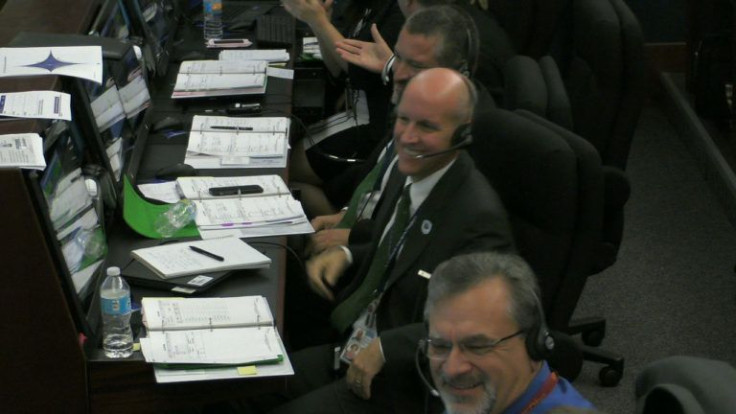NASA Successfully Launches CYGNSS Hurricane Tracking Satellites After Monday's Cancellation

NASA successfully launched a set of eight little satellites on board the Orbital ATK Pegasus XL rocket into Earth’s orbit Thursday morning, the space agency said.
The satellites, which make up the Cyclone Global Navigation Satellite System (CYGNSS), will help improve hurricane intensity forecasts.
The launch was cancelled on Monday after problems with the hydraulic pump and weather issues, but this time around NASA had some luck.
“The deployments looked great — right on time,” said John Scherrer, CYGNSS Project Manager.
“We think everything looks really, really good. About three hours after launch we’ll attempt first contact, and after that, we’ll go through a series of four contacts where we hit two [observatories] each time, checking the health and status of each spacecraft,” he added.

Activities prior to launch in throughout the morning “went smoothly” and were “aided by good weather and healthy vehicles,” said NASA Launch Manager Tim Dunn.
“It’s a beautiful day, with gorgeous weather,” Dunn said. “We had a nominal flyout, and all three stages performed beautifully. We had no issues at all with launch vehicle performance.”
Just 13 minutes after the the launch the first pair of CYGNSS satellites were deployed, with the rest following every 30 seconds.
“It’s a great event when you have a successful spacecraft separation – and with eight microsatellites, you get to multiply that times eight,” Dunn said.
Launch! @OrbitalATK’s rocket released from the aircraft and our #CYGNSS hurricane mission is headed to orbit. Watch: https://t.co/KX5g7zfYQe pic.twitter.com/MuydYrsprI
— NASA (@NASA) December 15, 2016
What Went Wrong Last Time
The launch was rescheduled various times after Monday’s issue. NASA said a problem with the hydraulic system developed after takeoff, just 25 minutes before the initial 8:30 a.m. launch schedule. The faulty hydraulic system was not for the L-1011 "Stargazer" aircraft itself, but for the system that allows the Pegasus XL rocket to release from the aircraft, NASA said. That system was not meeting its “prescribed pressures,” which suggested a problem with the hydraulic pump. The weather also complicated the launch with pilots flying “around, under and over a lot of precipitation and bad clouds,” said Dunn.
What CYGNSS Will Do
The small satellites are meant to study ocean surface winds throughout the life cycle of tropical storms and hurricanes, NASA said. That data could help scientists understand key air-sea interaction processes that take place near the core of storms.
A single satellite can only measure any location once every two or three days, but the set of eight satellites can gather data from anywhere in the tropical oceans on average once every seven hours.
NASA expects to start getting science data by next week, and says CYGNSS is expected to be operational in time for next year’s hurricane season.
© Copyright IBTimes 2024. All rights reserved.











